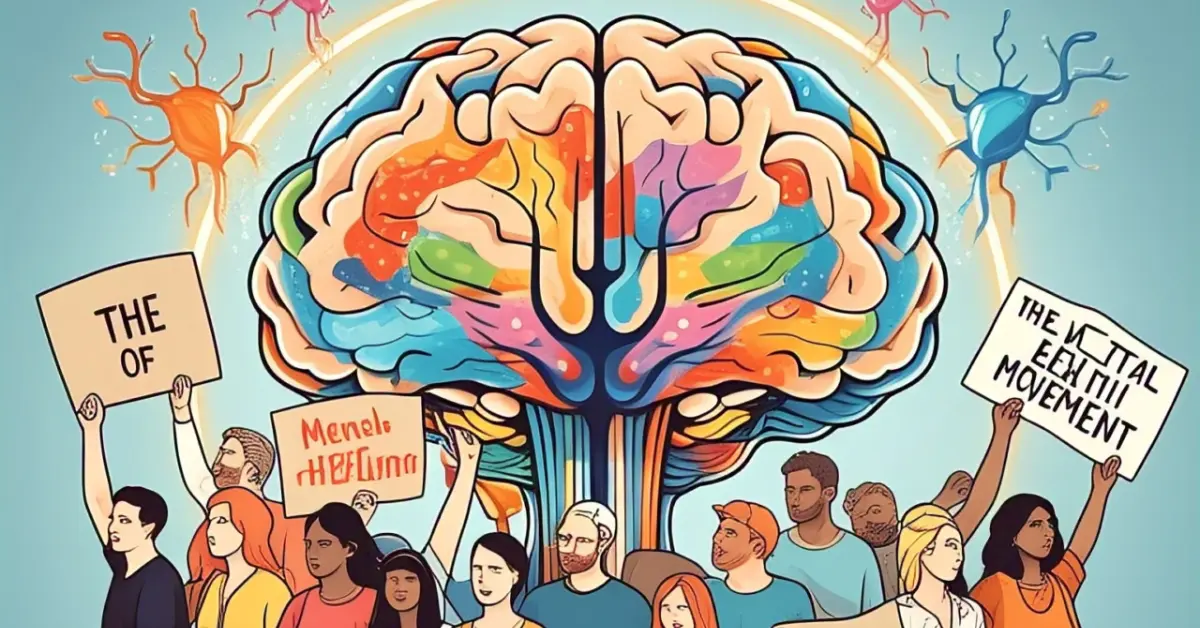Over the years, countless studies have shown that incorporating exercise into your daily routine can yield profound benefits for both your mental and physical well-being. When you engage in regular physical activity, you not only improve your fitness levels but also enhance your mood and cognitive functions. This blog post will explore how making movement a priority can empower you to achieve your goals, boost your energy, and create a healthier lifestyle that transforms the way you feel about yourself and your world.
Key Takeaways:
- Physical Health Benefits: Regular exercise enhances cardiovascular health, strengthens muscles, and improves overall physical fitness.
- Mental Well-being: Exercise boosts mood and reduces anxiety and depression by releasing endorphins, leading to a more positive mindset.
- Goal Achievement: Setting and achieving fitness goals builds self-discipline and motivation, fostering a sense of accomplishment that spills over into other areas of life.
The Science of Exercise
For many, the act of exercising is primarily associated with physical appearance or health benefits. However, there’s an intricate relationship between exercise and mental well-being that is deeply rooted in science. Engaging in regular physical activity is not just about building strength or enhancing endurance; it also plays a vital role in improving brain function and mental health. Understanding how exercise influences your mind can empower you to make it a central part of your life, thus reaping rewards that extend beyond the gym.
How Exercise Affects the Brain
Any time you engage in physical activity, your brain undergoes several profound changes that enhance its overall functionality. When you exercise, blood flow to the brain increases, supplying it with the imperative oxygen and nutrients it needs to thrive. This boost in circulation not only helps with the creation of new brain cells but also promotes neuroplasticity—the brain’s ability to adapt, change, and reorganize itself. These changes can lead to improved cognitive performances, such as better memory, learning capabilities, and even creativity.
Neurotransmitters and Mood Enhancement
An imperative aspect of how exercise transforms your mind lies in its impact on neurotransmitters—chemical messengers that communicate between nerve cells. When you engage in physical activity, your body releases neurotransmitters such as serotonin and dopamine, which are known for their positive effects on mood regulation. Increased levels of these neurotransmitters can help reduce feelings of anxiety and depression, making you feel more balanced and uplifted after a workout. Incorporating regular exercise into your routine can significantly elevate your mood and enhance your emotional resilience.
Another important point to consider is the cumulative effect of physical activity on your brain’s chemical balance. This doesn’t just happen in the short term; the positive influence of consistent exercise on your neurotransmitter levels can lead to lasting improvements in mood stability. Over time, as you develop a regular workout routine, you may find it easier to cope with stressors and experience fewer mood swings, allowing you to enjoy a more stable mental state.
The Role of Endorphins in Stress Relief
On a physiological level, endorphins are your body’s natural painkillers, released during physical exertion. As you exercise, your body produces these feel-good hormones, which not only help mitigate discomfort but also induce euphoric sensations. This phenomenon, often referred to as the “runner’s high,” can lead to decreased stress and improved overall mental wellness. By making exercise a part of your life, you’re tapping into a powerful natural mechanism that helps you manage stress levels and promotes relaxation.
Also the effectiveness of endorphins extends beyond just their immediate release during workouts. Regular physical activity helps to maintain higher baseline levels of these hormones in your body, contributing to long-term stress resilience. Establishing a consistent exercise routine can, therefore, provide you with a formidable tool in managing the challenges of daily life, making it easier to face stressors with a calm and focused mind.
Physical Benefits of Exercise
You may not realize it, but regular exercise has a profound impact on your physical health. Engaging in consistent physical activity can lead to a variety of benefits that extend well beyond merely breaking a sweat. From managing your weight to boosting your cardiovascular health, the advantages of exercise are plentiful and well worth the effort.
Weight Management and Body Composition
Against the backdrop of modern life’s many challenges, maintaining a healthy weight can seem like a daunting task. However, incorporating exercise into your routine significantly helps regulate body weight and improve body composition. When you engage in physical activity, you burn calories which, combined with a balanced diet, can lead to sustainable weight loss or maintenance. This not only enhances your appearance but also boosts your overall self-esteem and quality of life.
Moreover, regular exercise assists in building muscle, which is more metabolically active than fat. This means that the more muscle mass you have, the more calories your body will burn at rest. As a result, you can enjoy the many benefits of an active lifestyle while keeping undesirable pounds at bay.
Strength and Endurance Improvements
Behind every successful fitness journey lies a foundation of strength and endurance. As you consistently engage in exercise, whether it’s lifting weights, participating in resistance training, or joining a cardio class, you progressively increase your muscular strength and stamina. This not only allows you to perform daily activities more easily but also enhances your physical performance in sports and recreational activities.
Indeed, building strength and endurance comes with lasting benefits. As you develop stronger muscles and improved stamina, you’ll find that physical tasks become less daunting. The gains in strength can contribute to better posture, reduced risk of injury, and even a more active lifestyle as you conquer challenges that once felt overwhelming.
Cardiovascular Health and Longevity
Below the surface of your heart, there’s a tremendous potential for enhancement through exercise. Regular physical activity helps improve your cardiovascular health by strengthening your heart, improving blood flow, and lowering blood pressure. With each workout, you’re not just working on your physique, but also significantly enhancing your body’s ability to fight heart disease—a leading cause of mortality worldwide.
The advantages of maintaining excellent cardiovascular health extend beyond just the workout itself. In fact, studies indicate that those who regularly engage in exercise enjoy longer lifespans. The heart, when conditioned through regular aerobic activity, can efficiently deliver oxygen-rich blood to your muscles and organs, ultimately enhancing your longevity and your quality of life.
Weight loss and improved cardiovascular functionality work harmoniously. As you shed excess pounds through exercise, you often also experience reductions in resting heart rate and improves in overall heart efficiency. Consequently, this dual approach not only supports a healthier weight but also safeguards against heart-related issues as you age.
Mental Health and Exercise
All too often, mental health struggles like anxiety and depression can feel overwhelming. However, engaging in regular exercise can significantly help alleviate these challenges. Research shows that physical activity releases endorphins, the body’s natural mood lifters. When you incorporate exercise into your routine, you not only improve your physical well-being but also foster positive changes in your mental state. This positive shift can lead to a profound reduction in feelings of isolation, helplessness, and sadness that often come hand-in-hand with these conditions.
Reducing Anxiety and Depression
Against this backdrop of rising mental health concerns, exercise emerges as a potent antidote. Numerous studies demonstrate that even simple activities, like walking or stretching, can significantly diminish symptoms of anxiety and depression. Engaging in exercise helps combat negative thoughts by providing you with a constructive outlet to channel your emotions. As you push yourself physically, you’re often distracted from those racing thoughts, allowing your mind a much-needed respite.
The Impact of Exercise on Stress Levels
On a broader scale, physical activity plays a vital role in regulating stress levels. When you exercise, your body produces a surge of stress-reducing hormones, such as norepinephrine, which can enhance your ability to cope with stress. As you make exercise a regular part of your life, you may notice that you become better equipped to handle stressful situations, leading to improved mental clarity and emotional stability.
Mental well-being benefits extend beyond just temporary relief; regular exercise can even reshape the way you perceive everyday stressors over time. The discipline and resilience required to maintain an exercise routine translate to better coping mechanisms for life’s challenges. You’ll find that as you consistently engage in physical activity, you’re not only improving your body but also fortifying your mental framework, preparing you for whatever life throws your way.
Building Resilience through Physical Activity
Around you, resilience can often feel like an elusive trait, yet engaging in physical activity can help cultivate this important quality. By setting and achieving fitness goals, you learn to overcome obstacles and setbacks, reinforcing your ability to persevere. This newfound resilience directly correlates to your ability to tackle challenges in other areas of your life. As you push through physical barriers, you empower yourself mentally, creating a positive feedback loop of strength and confidence.
Physical activity not only strengthens your body but also fortifies your mind against adversity. As you immerse yourself in your workout routine and face challenges in the gym or during classes, you’re training your brain to adapt and thrive in difficult situations. This dual benefit—that of developing both mental and physical strength—creates a solid foundation for resilience, allowing you to tackle life’s hurdles with greater confidence and poise.
Creating an Effective Exercise Routine
Not every exercise routine works for everyone, and it’s vital to establish one that aligns with your personal fitness goals and lifestyle. By creating an effective exercise routine, you can maintain motivation and see real changes in both your mind and body. This chapter will guide you through setting realistic goals, exploring different types of exercise, and incorporating flexibility and balance training into your program.
Setting Realistic Goals
For you to achieve your fitness aspirations, setting realistic and attainable goals is vital. Instead of aiming for grand transformations overnight, focus on short-term milestones that motivate you and build confidence. For instance, if your goal is to run a 5K, consider first setting a target to walk or jog for 15 minutes each day. As you achieve these smaller objectives, you’ll find yourself motivated to reach for bigger ones.
Also, regularly assess your progress to ensure your goals remain challenging yet achievable. This approach ensures you can adapt your routine according to your evolving needs and circumstances. By committing to a flexible plan, you’ll be more likely to stay on track and sustain momentum over the long term.
Types of Exercise: Aerobic vs. Anaerobic
Anaerobic exercise is characterized by high-intensity workouts that push your muscles to their limit without relying on oxygen for fuel. Common forms of anaerobic activity include weightlifting and sprinting, which promote muscle growth and improved strength. In contrast, aerobic exercise utilizes oxygen to fuel your stamina, enabling you to engage in activities like running, swimming, or cycling for extended periods.
| Aerobic Exercise | Anaerobic Exercise |
| Improves cardiovascular health | Builds muscle mass |
| Enhances endurance | Increases strength |
| Burns calories efficiently | Boosts metabolism |
| Involves lower intensity over longer periods | Focuses on short, high-intensity bursts |
| Examples: walking, jogging, swimming | Examples: weightlifting, sprints, HIIT |
- Both forms of exercise have unique benefits.
- You can incorporate both into your routine for balanced results.
- Consider your fitness level when choosing workouts.
- Mixing exercises can prevent monotony and enhance motivation.
- The key is finding what works best for you.
Incorporating Flexibility and Balance Training
But don’t overlook the importance of incorporating flexibility and balance training into your exercise routine. Stretching improves your overall flexibility, helps prevent injuries, and enhances your performance in other physical activities. Yoga and Pilates are excellent ways to improve balance and flexibility while also promoting relaxation and mindfulness.
Engaging in balance exercises can significantly enhance your stability and coordination, making daily activities safer and more manageable. Simple practices, such as standing on one leg or using a balance board, can be easily integrated into your routine and provide substantial benefits for your overall physical health.
Against a backdrop of intense workouts, integrating mild intensity activities is vital for holistic fitness. This inclusion aids muscle recovery and increases overall mobility. As you progress through your exercise routine, you will find that flexibility and balance training enables you to approach activities with greater confidence and reduced risk of injury.
And by consistently committing to a balanced regimen, you will create a physique that not only looks great but also feels strong and capable. It’s vital to enjoy the process and adjust your plan as necessary, allowing you to stay engaged and motivated on your fitness journey.
Overcoming Barriers to Exercise
Now that you are aware of the benefits of exercise, it’s time to address the barriers that may be preventing you from incorporating physical activity into your daily routine. Overcoming these obstacles is imperative for achieving your fitness goals and enhancing your well-being. By identifying what’s stopping you, you can create a tailored approach that leads to lasting change.
Identifying Personal Obstacles
Around you, various factors might stand in the way of regular exercise, such as a busy schedule, personal commitments, or even lack of motivation. The first step in overcoming these obstacles is self-reflection. Take some time to list the specific barriers that you encounter, whether it’s a demanding job, family responsibilities, or your mindset. By acknowledging these challenges, you can address them more effectively.
It can also be beneficial to assess your emotional relationship with exercise. Are there past experiences that have made you hesitant to engage in physical activity? Understanding the roots of your obstacles can empower you to change your perspective and find innovative solutions that work for you.
Time Management Strategies
Among the most common reasons people cite for not exercising is the lack of time. To combat this, you’ll need to prioritize your schedule and carve out opportunities for physical activity. Start by analyzing how your day is structured. Are there pockets of time that you can dedicate to exercise? Even short bursts of movement can be effective.
What you may find helpful is to integrate exercise into your daily routine. Consider scheduling workouts as non-negotiable appointments in your calendar. This strategy not only boosts accountability but also reinforces the idea that physical activity is a vital part of your overall wellness plan. By adhering to this structure, you will gradually cultivate a routine that feels natural and sustainable.
The key is consistency. If you adopt a flexible approach, you’ll also learn to adapt your exercise plans to suit your lifestyle. Whether it’s fitting in a workout before or after work, during lunch breaks, or even utilizing home workout options, the more you make exercise a regular aspect of your day, the more it becomes habitual.
Finding Support and Accountability
Personal motivation can wane over time, making it important to seek support from others. Joining a fitness group, finding an exercise buddy, or even enrolling in classes can elevate your experience. Being surrounded by like-minded individuals can inspire you to show up and push through those tough days when motivation dwindles.
Additionally, being accountable to someone else—whether it’s a friend, family member, or a personal trainer—adds another layer of commitment to your exercise routine. Sharing your fitness goals and progress with someone else can keep you driven and you may find encouragement in each other’s journey.
With the right support system in place, you can enhance your commitment to your fitness goals. This shared experience not only makes exercising more enjoyable but also creates a network of individuals who uplift and motivate you when your own motivation may falter. Embrace the power of community in your journey toward a healthier you.
Developing a Motivational Mindset
After deciding to incorporate exercise into your routine, developing a motivational mindset is necessary for long-term success. A positive state of mind not only enhances your workout experience but also influences your overall approach to challenges in life. By cultivating a mindset of motivation and resilience, you set the stage for transformative changes in both your body and mind.
The Role of Positive Thinking
Positive thinking is more than just a simple affirmation; it’s a powerful tool that shapes your perception and response to physical activities. When you approach exercise with optimism, you naturally unlock the door to greater enjoyment and commitment. This mindset helps replace self-doubt with encouragement and creates a self-fulfilling cycle of motivation that keeps you engaged in your fitness journey.
Visualization Techniques
At the heart of motivating yourself for physical activities lies the practice of visualization. By picturing yourself successfully completing your exercise goals, you create a mental image that fuels your determination. This practice helps you not only to foresee the results you desire but also to experience the feelings associated with achieving those results, making them significantly more attainable.
A successful visualization routine involves dedicating a few minutes daily to close your eyes and imagine each step you need to take towards your objective. Visualize the setting, the movements, and even the emotions tied to reaching your milestones. The more vivid and detailed your visualizations, the more likely they can influence your behavior and encourage you to push through obstacles.
Celebrating Small Victories
Before begining on your fitness journey, it’s necessary to recognize the importance of celebrating small victories along the way. Each positive step, whether it’s completing an extra set, running a little farther, or simply showing up to the gym, deserves acknowledgment. These milestones not only boost your confidence but also serve as a reminder of your progress, reinforcing your commitment to your fitness goals.
For instance, if you set a goal to work out three times a week and successfully do so for a month, treat yourself to something special. This recognition creates a positive feedback loop, where each victory motivates you to strive for the next one. By celebrating these moments, you cultivate a sense of accomplishment that propels you forward in your fitness journey. The act of recognizing accomplishments, no matter how small, can empower you to embrace challenges with enthusiasm and resolve.
Conclusion
Hence, engaging in regular exercise is not just about enhancing your physical abilities; it also plays a pivotal role in improving your mental well-being. You have the power to transform both your mind and body by incorporating movement into your daily routine. The benefits you experience, such as increased mood, better sleep quality, and greater focus, are just the beginning. You will find that each session not only strengthens your muscles but also fortifies your resilience against stress and anxiety, enriching your overall quality of life.
Moreover, as you progress on your fitness journey, you’ll cultivate a sense of accomplishment and self-worth that permeates all aspects of your life. Finding an activity that you enjoy will encourage you to stay committed, making it easier to maintain this vital lifestyle change. By choosing to prioritize exercise, you open the door to a dynamic, healthier, and more fulfilling existence. So, get moving today — you owe it to yourself to discover the profound effects that consistent physical activity can have on your mind and body.




